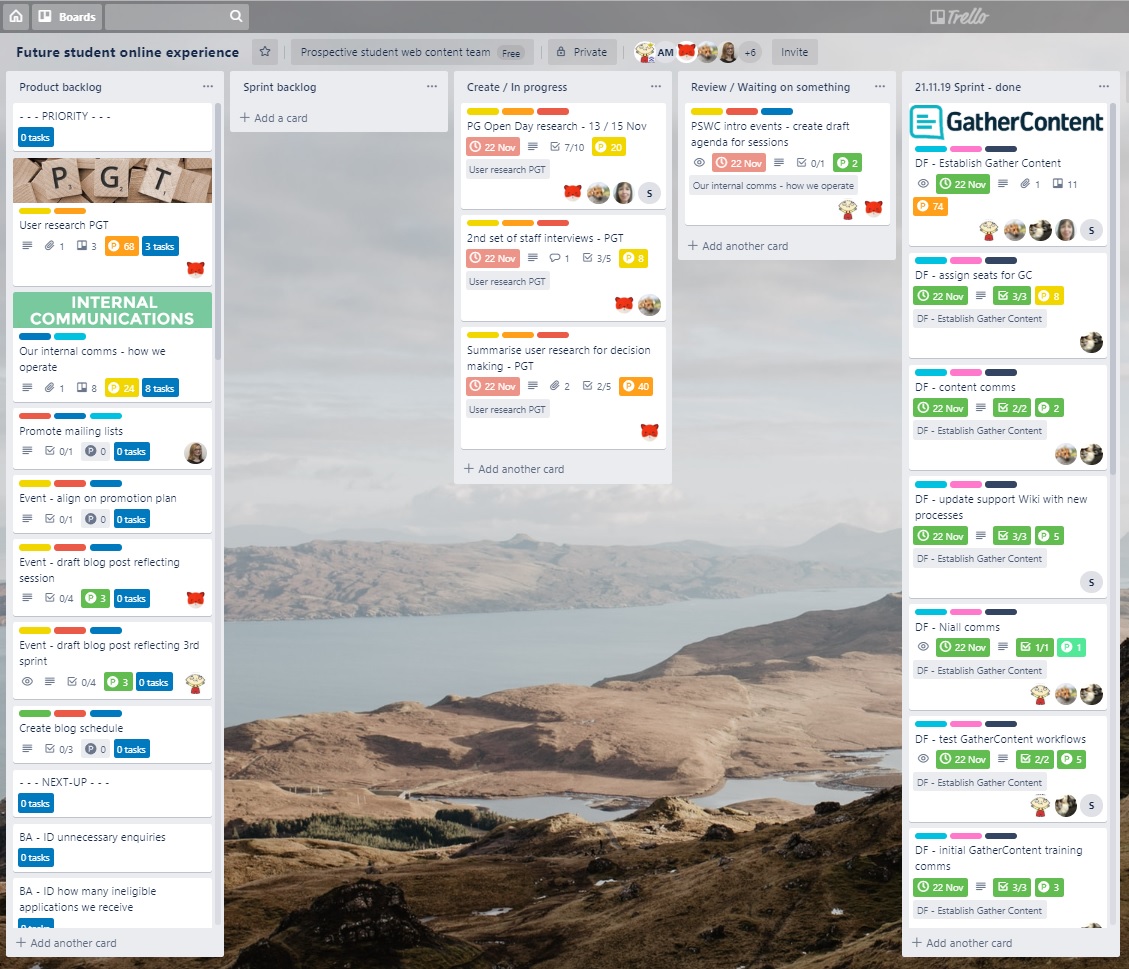Sprint 3 review: First wins from an early sprint
The new Prospective Student Web Content Team is adopting an Agile approach to delivery, using the Scrum framework. Although this represents a new way of working for many in our team, it’s already a nice fit for our mission. We’re getting on with the job at hand.
Visualising our work
To best frame our work and Scrum cycle, we use a Kanban board in Trello. This is a simple agile project management tool designed to help visualise our work.
It’s also a really handy way to share progress with colleagues and stakeholders in one place – in line with the principle of working in a transparent way. On one screen we can see:
- the product backlog
- the work items that have been dragged into the current sprint
- what’s being actively worked on and how it’s progressing
- the size of the job and the team members responsible for the work

To best frame our work and Scrum cycle, we use a Kanban board in Trello. This is a simple agile project management tool designed to help visualise our work.
As our mission continues next year, we can expect our sprints to become more rigorous. However, our early sprints provided a good opportunity to experiment and test the principles of Agile working.
Progress has been very positive.
What we delivered in our last sprint
In our latest sprint – only our third – we were able to:
Continue to set up shop
This included creating our mailing lists, as well as our blog and events schedule.
Begin researching PG fees and funding
The PG open day in November allowed us to consider what work we could realistically deliver, breaking the work up into distinct, prioritised tasks as follows:
- Set up hardware, software and workflows for recordings
- Agree goals with stakeholders
- Create test plan
- Run through with team objectives of testing and training
- Pilot test
- Conduct final testing
- Provide overview of findings from sessions
Gayle Whittaker, our team’s excellent UX specialist, writes more about the insight we were able to gather through the open day.
Doing guerrilla usability research at the postgraduate open day
Introduce important change in the way we update the UG degree finder
We’ve been very busy preparing our new content operations software, GatherContent. The solution will allow us to collaborate with colleagues and update UG degree content at a much faster pace.
To get there we had to consider a number of different activities – consisting of lots of different jobs – what we might call an epic.
Away from the barriers associated with traditional project management, the team were able to work openly and self-organise through the sprint planning session.
Before long we had aligned on the required tasks, the size of those jobs, and who would do what and when. As such we were able to:
- Lay out an effective communications plan
- Experiment and test new workflows
- Rapidly update our Wiki with process changes
- Test and implement bespoke training for colleagues
And of course on the back of sprint-3 we carried important lessons forward to sprint-4, both in terms of the work itself and what we learned by working in this new way.
Continuous learning. Continuous improvement.
What’s next?
As our work runs into next year and beyond I’ll be reporting on what the team is delivering – and learning – on the back of each sprint. We’ll also be considering what all this work means with respect the larger content strategy landscape, working closely with Information Services and Website and Communications to deliver future web services.
There is much to do. But we are confident our new approach will mean we are working more effectively as a team, and as an organisation, together.




1 replies to “Sprint 3 review: First wins from an early sprint”